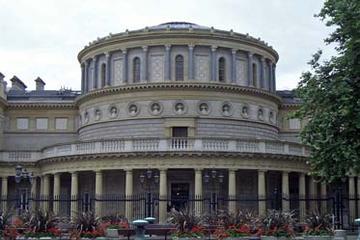
The National Museum of Ireland is dedicated to showcasing items of Irish art, culture, and natural history. Of the three branches the collections are divided amongst, the archaeology section, located on Kildare Street, holds the best known and most impressive of all of the exhibits.
Its collection of medieval metalwork is known as the Treasury and is home to the world's most complete collection of Celtic metal artifacts, dating back from Ireland's Iron and Bronze Ages. Highlights of the collection include the Ardaugh Chalice, considered the finest piece of Celtic art found, and the Tara Brooch, an intricate piece of jewelry crafted in the 8th century. Other artifacts are grouped into "hoards", of which the Mooghaun and Broighter hoards are the most notable.
The museum also displays an extensive collection of prehistoric goldwork as well as artifacts that document the settlement of Ireland from 7,000 BC all the way up to 500 BC. The second floor of the museum is dedicated to relics of the Viking era, dating from their nearly 400 year reign over Dublin.
Though the Museum of Ireland was established to display items of the nation's history, it also holds permanent exhibits of Ancient Egyptian artifacts, ceramics and glass from Ancient Cyprus, and Ancient Roman relics. It should also be noted that the building itself is a homage to Roman architecture, with its colonnaded entrance that opens into a rotunda modeled after the Pantheon.